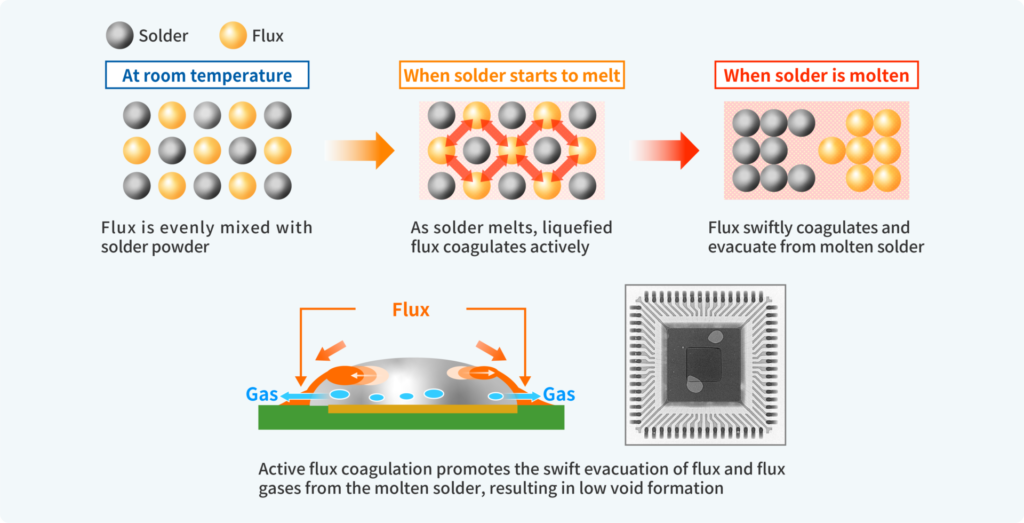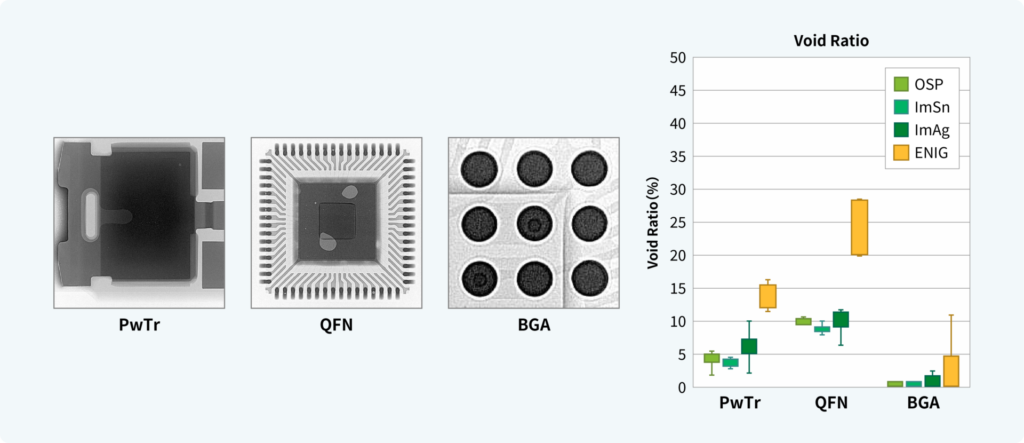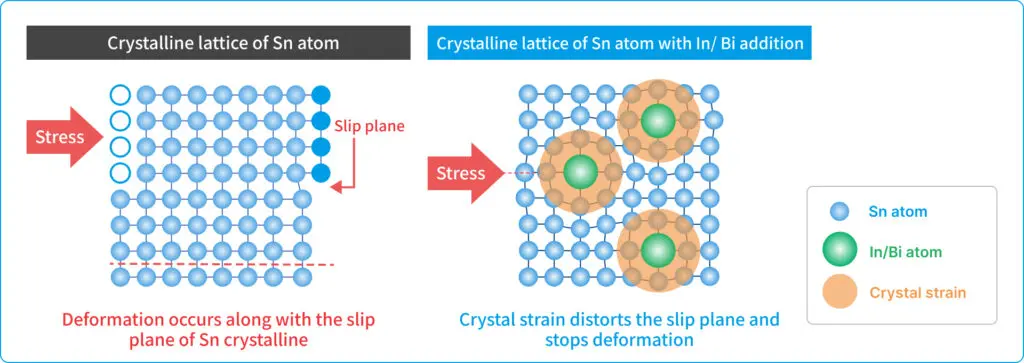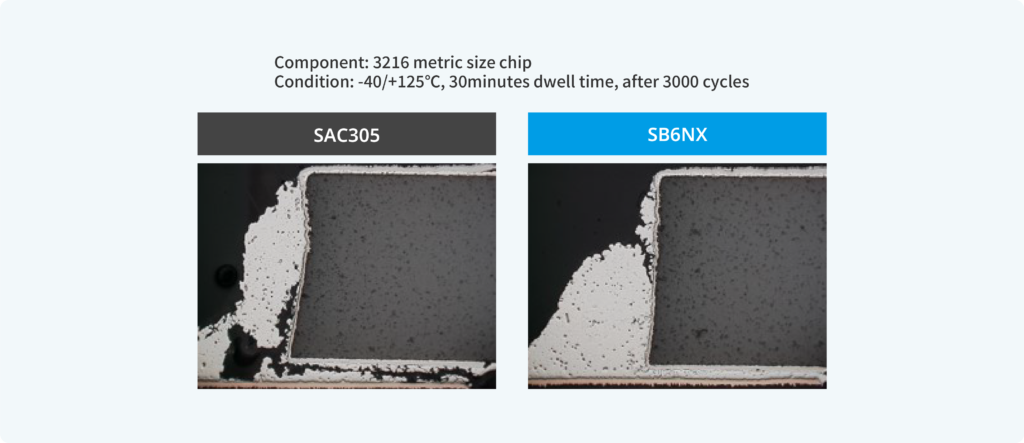High-Durability and Super Low-Void
Conventional high-reliability solder paste has been concerned with void occurrence due to its alloy characteristics.
However, KOKI’s new flux technology achieved super low-void solder joint with high-durability solder alloy like never before.
G850 flux can quickly releases potential void by flux coagulation to help reduce the void with high-reliability solder paste.
It also has significantly improved heat-resistance to provide higher reflow profile flexibility.
■Flux Coagulation Technology

Stable super low-void performance regardless of the component size and surface finish (OSP, ImSn, ImAg and ENIG, etc.)
New flux gas-releasing technology delivers super low-void solder joint with bottom electrode components which the gas in molten solder is difficult to release.
It ensures same stable soldering quality regardless of the component size or PCB pad surface finish.
■Voiding result of different components

Increasing Demand for Reliability
PCBs in an electric product for automotive or industrial equipment are exposed to harsh working environments with significant temperature differences and in some cases, SAC305 solder alloy cannot provide sufficient reliability.
Temperature cycling causes stress in the solder joint due to the components and PCB to expansion and contraction, and the stress causes cracking in the solder joint.
Therefore, a solder alloy which withstands thermal-cycle stress is required.
■Schematic image of thermal-cycle induced crack mechanism in chip component solder joint

Alloy Strengthening by In and Bi addition (Solid Solution Strengthening)
Dislocations (irregularities in the crystal structure) occur in metals including Tin (Sn), the bulk material of the solder.
Dislocations eventually cause plastic deformation and cracking in the solder joint. Bi and In do not form compounds with Sn but replace the Sn atoms in their lattice positions (form a solid solution).
As the atomic radius of Bi and In are significantly larger than Sn, they form distortions within the matrix which prevent propagation and accumulation of dislocations.
In addition, this alloy has a lower melting point than SAC305 and reduces the thermal stress to the components during reflow.
■Solid Solution Strengthening Image(After stressing)

Prevents cracking from thermal-cycle stress
Solid solution strengthening offers high thermal-fatigue resistance as it does not fail even in a harsh temperature condition, such as -40˚C ~+125˚C.
Thermal-fatigue resistance contributes to an extension of product life of automotive electronics, failure of which may result in safety issues and for industrial equipment the product is expected to be longer-lasting.
■Cross-sectioned solder joint after thermal-cycling test(Pad finish: ENIG)

■Stress strength after T/C

Compatible with ENIG Finish Soldering Pads
Sn-Ni based IMC layer grows in the ENIG finish pad (Au plating layer of the soldering pad) and forms a Phosphorus (P)-rich layer which makes the solder joint interface brittle.
SB6NX solder alloy contains Cu, which is highly compatible with Ni, and forms a barrier layer to prevent Ni diffusion.
As a result, the combination of SB6NX solder and the ENIG finish pad can obtain equivalent joint reliability as OSP the finish pad.










